2002 North Main Street
Santa Ana, California 92706
TEL: 714.567.3600
The Immaculate ‘Art of Mary
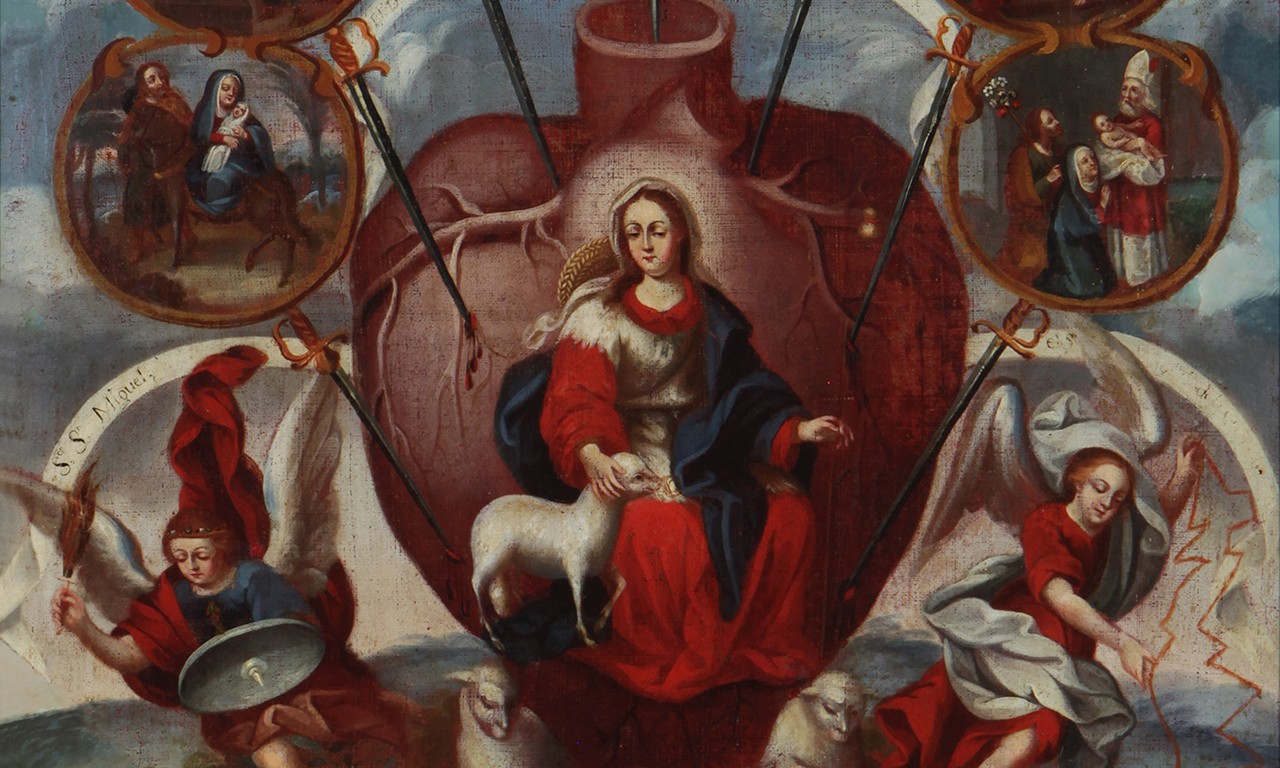 |
| Detail of Heart of Mary, c. 1750 Miguel Ballejo y Mandirano; Mexico Oil on canvas; 30 x 22 in. 89.22.2 Donated by Mr. Gene R. Wood |
Feast of the Hurt
Pain is an awful thing. It can come from a variety of sources, but it is perhaps most punishing when it attacks us through a loved one. The Christian faith is in part based around the suffering and self-sacrifice of Jesus Christ for the sins of mankind, but over the past two millennia a large devotional following has grown around the Virgin Mary, whose maternal love for her son inspired great joyousness in her but visited seven sufferings upon her. Given that the 15th of September is the annual feast day for the Sorrowful Mother, this post looks at Heart of Mary, a depiction of the Virgin Mary’s Seven Sorrows on display in the Bowers’ Missions and Ranchos exhibition. Here we place the painting in its larger historical and religious context, analyze how it is similar and different to other depictions of the Seven Sorrows of the Virgin Mary and look at how it has previously been misidentified.
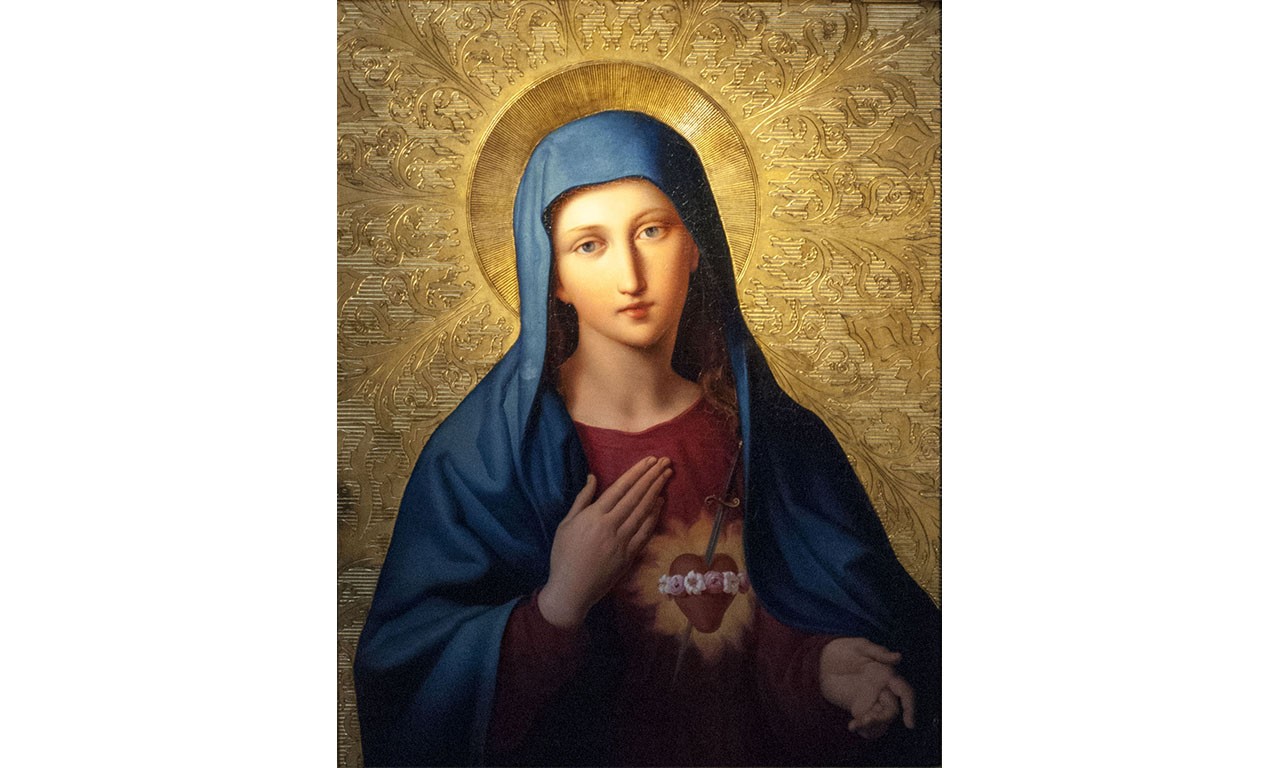 |
| The Heart of Mary, 19th Century Leopold Kupelwieser (1796–1862) |
Many Marys Make Merry Monks
Marian art—works pertaining to the Virgin Mary—first began to rise to prevalence during the Middle Ages when important saints turned to her as a devotional figure. Inspired in particular by specific excerpts from the Gospel of Luke, the hail Mary began to be used as a way of Christians asking for intercession from the Virgin Mary in their lives. Over time, the life of Mary developed a devotional following, and by the 12th Century she was a central figure to several orders including the Servites, servants of Mary. Referred to as the Immaculate Heart of Mary, the internal life of the figure further developed in its iconography to reflect the original passages of the Gospel of Luke that discussed the prophecy of Simeon: “This child [Christ] is destined to cause the falling and rising of many in Israel, and to be a sign that will be spoken against, so that the thoughts of many hearts will be revealed. And a sword will pierce your own soul too.” And so, it is the imagery of a sword piercing Mary’s heart that is the identifying feature of artworks depicting the Seven Sorrows of the Virgin Mary.
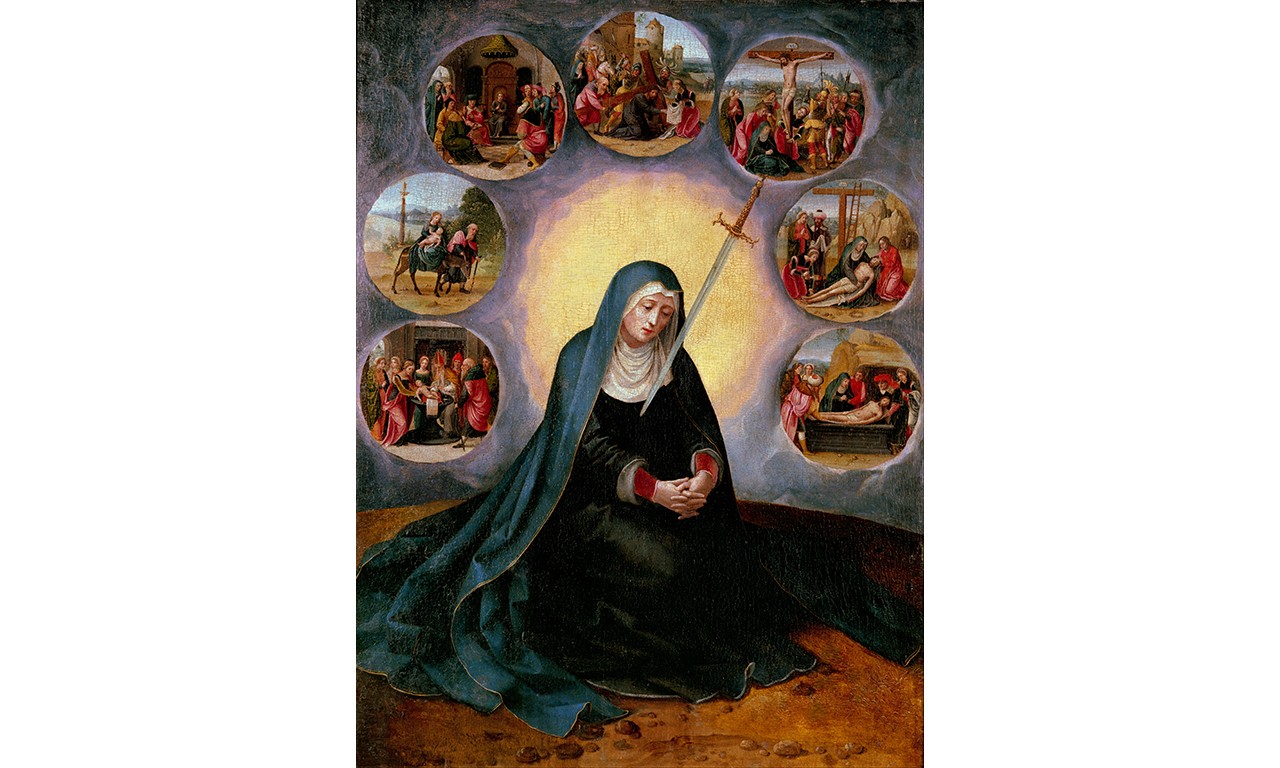 |
| Virgin of the Seven Sorrows, late 16th century Attrib. to the Master of the Female Half-Lengths |
Seven Sorrows
Though the scenes of the Seven Sorrows vary slightly, the seven most commonly depicted are: the prophecy of Simeon foretelling of Mary’s suffering; the flight into Egypt to escape Christ’s murder at the hands of King Herod; the loss of the Child Jesus in the Temple, in which Mary and Joseph lose Christ for three days; Mary’s meeting with Christ carrying the cross to Mount Calvary; the crucifixion; Mary taking the body of Christ down from the cross; and finally placing the body of Christ in the tomb.
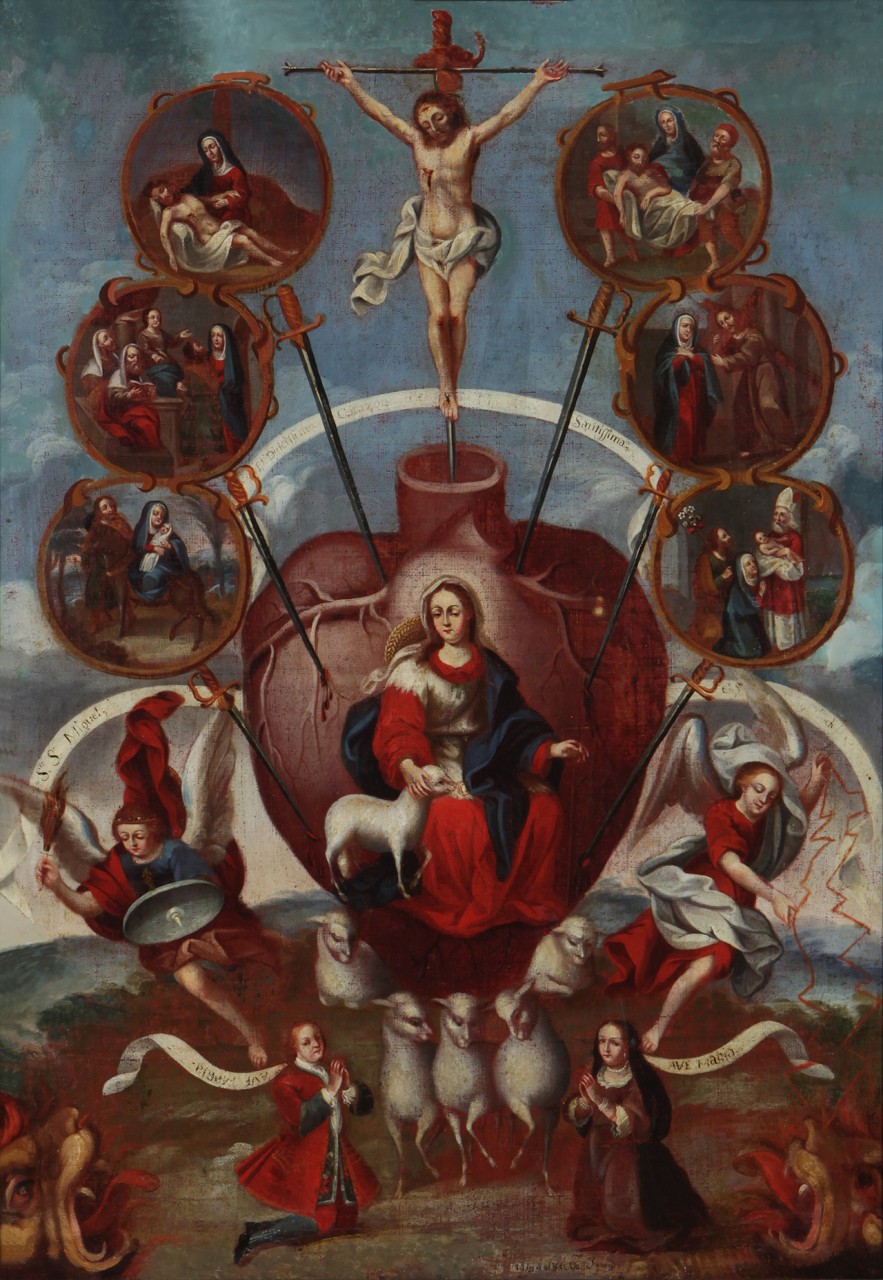 |
| The Bowers Museum's Heart of Mary (89.22.2) Donated by Mr. Gene R. Wood |
Spot the Difference
As is often the case with the depiction of the Seven Sorrows, here we see that Mary is surrounded by framed scenes of her troubles. Two things are done differently with this painting, however. The first of which is that the scenes tend to begin in the bottom left and travel around Mary in an arc so that the final scene is in the bottom right corner. Here, the first scene is in the bottom right corner and generally serpentines its way upward. The other difference is that the heart of Mary is depicted here as a distinct element pierced by seven swords, rather than Mary herself being pierced. Directly related to this, the crucifixion is not contained within a frame. Christ is instead crucified on one of the swords piercing Mary’s heart. Whether the uniqueness of these characteristics is indicative of some spontaneity on the part of the artist or a lack of material for the artist to rely on is unclear.
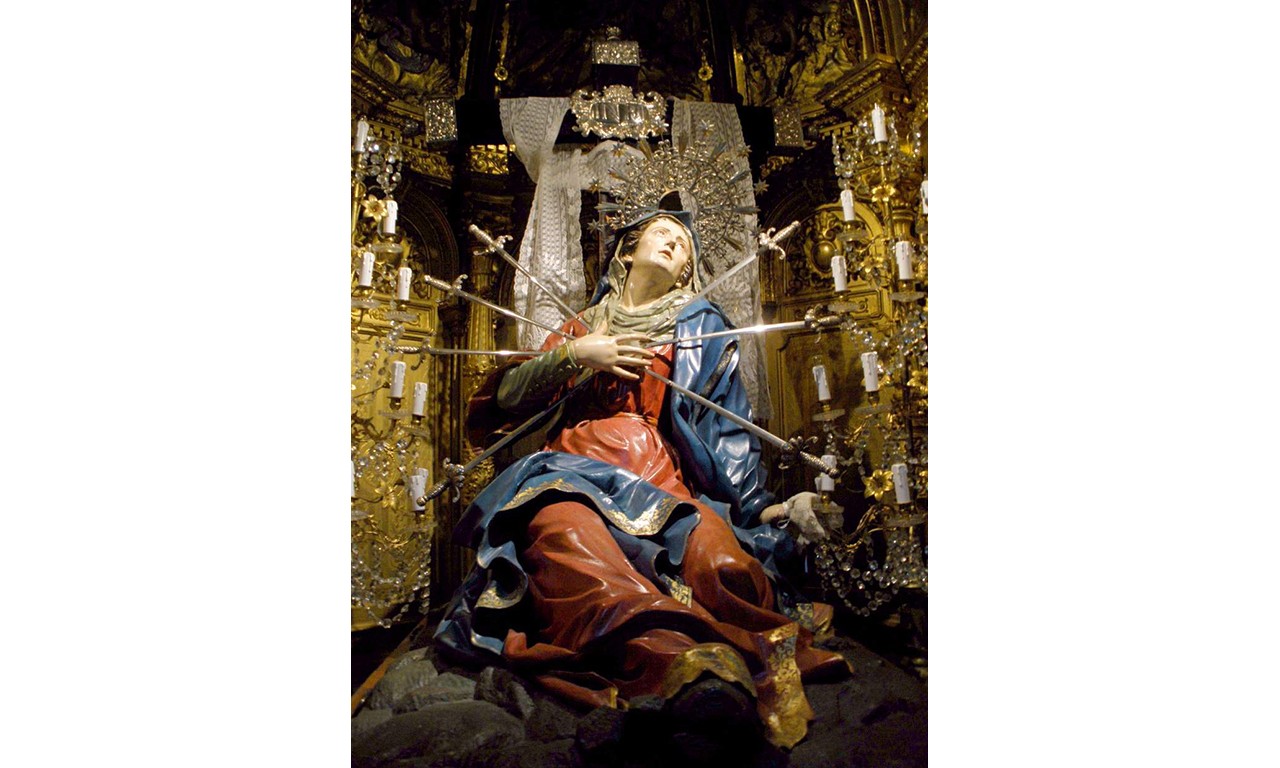 |
| Our Lady of Sorrows at the Church of the True Cross, Salamanca, Spain Taken by Wikimedia Commons User Zarateman and licensed under the Creative Commons Attribution-Share Alike 4.0 International |
Heaven and Other Heart Songs
Heart of Mary has been credited to an 18th century artist in colonial registries named Miguel Ballejo y Mandriano. Unfortunately, little else in known about this artist, but in general terms devotional paintings to the Virgin Mary were very prevalent in Mexico during this period as a tool of the Catholic Church to convert Americans. Though there are a few gaps in the painting’s provenance, its modern chronicle begins with it hanging on the walls of the Mission Inn in Riverside, California. At some point in the latter half of the 20th Century, several works were sold from the Mission Inn to raise funds. It was eventually purchased by Mr. Gene R. Wood who in turn donated it to the Bowers Museum. When it was first put on display it was erroneously given the title The Crucifixion, Mary and the Sacred Heart. Though it has since properly been identified as a scene of the Seven Sorrows, it retains the title under which it was donated to the museum, Heart of Mary.
Text and images may be under copyright. Please contact Collection Department for permission to use. References are available on request. Information subject to change upon further research.

Comments